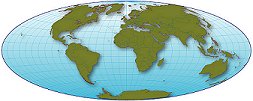International Institute for Environment and Development
80-86 Gray's Inn Road, London WC1X 8NH
info@iied.org
www.iied.org
tel: +44 (0)20 3463 7399
fax: +44 (0)20 3514 9055

Home:

The services that watersheds provide – such as quantity and quality of water – are decreasing, yet demand for these services is increasing.
Can market mechanisms help to increase these services by offering incentives for improved land use in catchment areas? Can such mechanisms also bring benefits to poor people living in those catchments such that their livelihoods are enhanced?
Based on evidence from a range of field sites, this project is generating much debate on how markets can bring most benefit to both watershed services and those living in watershed areas.
 On this site you can view and and download a number of case studies from affected regions, and a detailed analysis of the results of those studies.
On this site you can view and and download a number of case studies from affected regions, and a detailed analysis of the results of those studies.
The site also contains links to further resources, and contact details for further information.
Recent and updated publications: Fair deals for watershed services: Lessons from a multi-country action learning project
Fair deals for watershed services in South Africa
All that glitters: A review of payments for watershed services in developing countries
Negotiating watershed services In response to the disappointing results of many regulatory or public investment approaches to watershed management, payments for environmental services has emerged as a new mechanism to maintain socially optimal environmental services by compensating people for the services they provide. However, without adequate understanding of stakeholders’ willingness to modify or maintain land use or water resource decisions, market-based mechanisms may prove to be unsustainable, with uncertain social and environmental outcomes. Negotiating resource use patterns is a process that requires an understanding of the type, level and duration of incentives for stakeholders to co-operate meaningfully. In this paper, we describe a negotiation support framework that has been developed from the literature and field experiences in Costa Rica and India. The framework then serves to critically examine a case study from each country to draw empirical lessons from the process of watershed management.
Impacts of payments for watershed services in Ecuador: emerging lessons from Pimampiro and Cuenca, The Payments for environmental services (PES) is a topic of increasing interest in Ecuador, particularly as a way to leverage funding for environmental protection. Payments systems are emerging, but as Ecuador’s experience of PES is only recent, the implications for national and local welfare are not yet clear. Thus, the objective of this study was to provide guidance in order to ensure that policies support payments systems that are beneficial to the poor, as well as to the environment. This report focuses on two case studies - Pimampiro and Cuenca. The report recommends inter alia that further understanding of the hydrological functions provided by particular ecosystems is needed, further information is required on the value of watershed services, a tax managed by the municipalities should be levied on water for agricultural use based on consumption, and that household surveys may not be the most effective way to gather information to evaluate social impacts of a compensation mechanism.
Briefings: Paying for watershed services: an effective tool in the developing world Payments for watershed services (PWS) are an increasingly popular conservation and water management tool in developing countries. Some schemes are thriving, and are pro-poor. Others are stalling or have only mixed success. Most rely on public or donor finance; and other sources of funding are unlikely to play a significant role any time soon. In part, financing PWS schemes remains a challenge because the actual evidence for their effectiveness is still scanty — it is hard to prove that they actually work to benefit both livelihoods and environments. Getting more direct and concrete data on costs and benefits will be crucial to securing the long-term future of PWS schemes. Payments for watershed services: opportunities and realities Many nations have found that regulatory approaches to land and water management have a limited impact. An alternative is to create incentives for sound management – under mechanisms known as payments for ecosystem services. It is a simple idea: people who look after ecosystems that benefit others should be recognised and rewarded. In the case of watersheds, downstream beneficiaries of wise upstream land and water use should compensate the stewards. To be effective, these ‘payments for watershed services’ must cover the costs of watershed management. In developing countries, they might also aid local development and reduce poverty. But new research shows that the problems in watersheds are complex and not easily solved. Payments for watershed services do not guarantee poverty reduction and cannot replace the best aspects of regulation.
Watershed services: who pays and for what? There is increasing interest in using payments to promote sound watershed management. Schemes range from small pilot projects involving just five families to a massive Chinese project that aims to reach 15 million farmers. The expectation is that such schemes will help to resolve problems such as declining water flows, flooding and deteriorating water quality by bringing in new funding from water users, the private sector in particular, and by providing incentives for sustainable management to those closest to natural resources. A review of active and proposed schemes in developing nations shows, however, that most schemes still depend on donor or government funding, and few are driven by water users. Meanwhile, evidence of benefits remains patchy.
Updated cases studies:
|
© 2012 International Institute for Environment and Development . All rights reserved.
